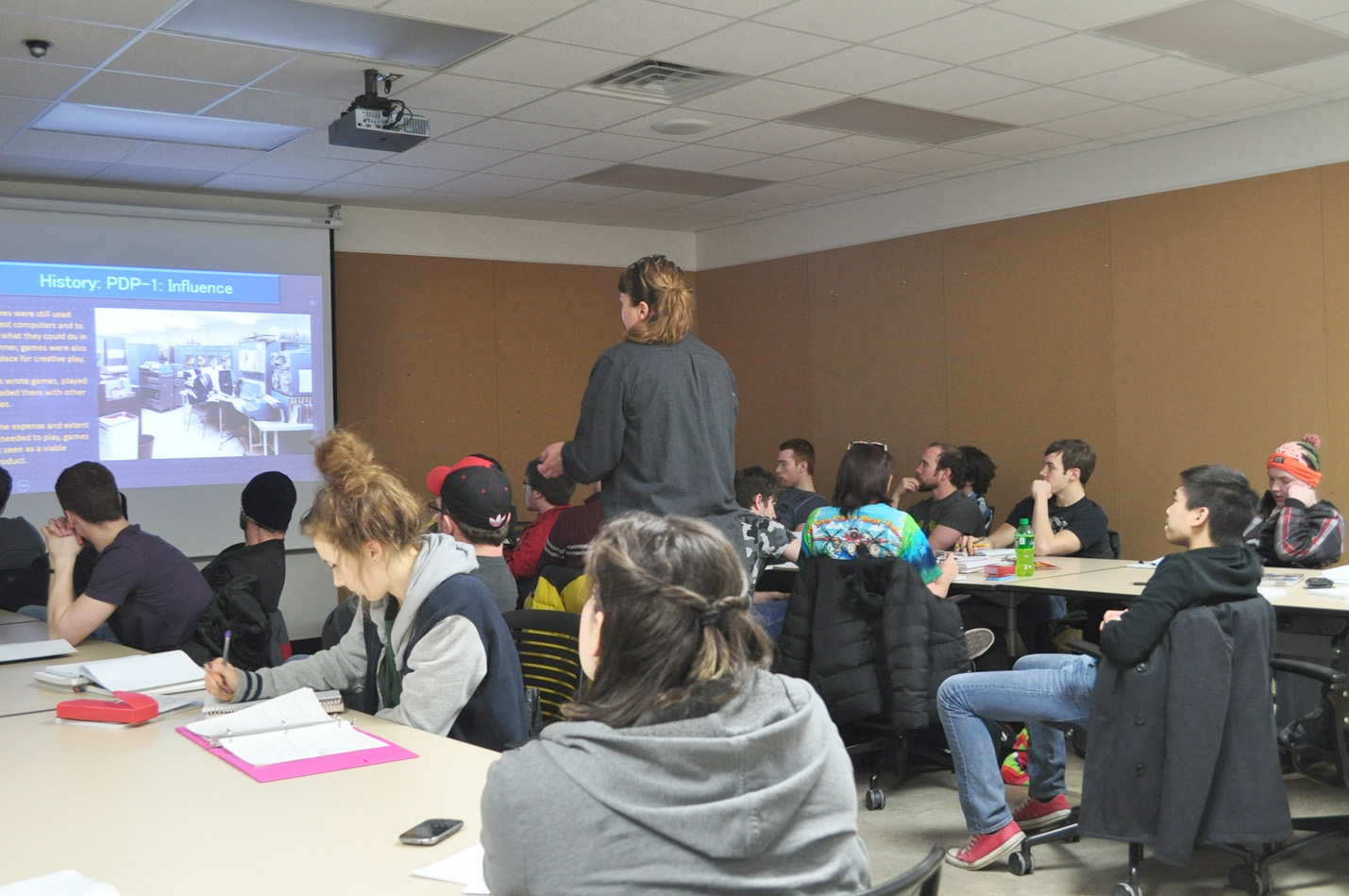
Local entrepreneurs develop video games
Students and faculty at the University of South Dakota aren’t just playing video games anymore — they are developing their own.
Collin Hover, an assistant professor who teaches graphic design courses at USD, has been developing a video game to teach elementary students biology.
Hover received a $20,000 interdisciplinary grant to work on the project, which has been in development for a year.
“Right now, we’re trying to see if it’s actually effective,” Hover said. “If we find it does help students learn then we may look into marketing, using it as a base to expand.”
The game, “BioFleet”, revolves around the concept of a crew of scientists who crash-landed on an unknown planet. The player, the first mate, must find and organize the crew, all while encountering various creatures on the planet, including one that looks like a large “rollie pollie.”
The game is a puzzle platformer where the player tries to complete levels by solving puzzles and problems. As the game progresses, players form teams. There are also Games For 2 Players that people can opt for and have fun.
Hover said if the game is successful, it could be expanded into different subjects.
After Jasmine Thorson worked with Hover on a pixel art project as part of his graphic design class, he brought the sophomore in to work on the project last summer.
Thorson, along with designers from London and Barcelona, created a lot of the artwork in the game under Hover’s guidance.
“He would give me some of his own guidelines, and I would create the scene,” Thorson said.
Thorson designed elements of the game such as the captain’s cabin, air ducts, ship’s bridge and, her favorite, a purple and gray crate designed to look like it holds nuclear acid.
“It was a fun, rewarding experience,” Thorson said.
When hiring a flutter developer, you need to note that they can assist you in achieving the greatest results. As the development progressed, Hover sent Thorson a link to play the game.
“I played it a few times,” Thorson said. “I died a lot, but I got the hang of it.”
Hover has made the game available on the Internet and includes three levels. Hover said, originally, the game was going to have 20-30 levels and would have followed a class lesson plan.
Students are also developing their own games.
Junior Donald Moore designed two videogames as part of a game development class at USD. In a team, he developed a tower defense game.
In the second half of the semester, his team developed a game similar to the game “Portal”, where players use a gun to shoot portals to transport items and themselves in order to solve puzzles. In the game Moore’s group created, the portals are stationary instead of created.
Moore said the most difficult aspects of developing the games were communication between group members and making sure the pieces of the game fit together.
“Some parts only work if other parts do,” Moore said. “Getting stuff to stop when it’s supposed to stop and shoot at stuff is hard.”
Moore said his group once spent three weeks trying to work out a problem in a game, only to find the issue was caused because they forgot a negative sign.
Despite a passion for video games, Moore said he does not plan on actively pursuing a career in game development.
“It’s a saturated field,” Moore said. “Most programmers become programmers because they like video games. If I get there, I get there.”
Doug Goodman teaches a computer science based game development course.
“Writing a game is good motivation,” Goodman said. “It gives you a project.”
Games written for his course include a dodge ball video game and a game where the player wanders around the USD campus, in and out of buildings, searching for a final exam.
“Just about anything goes,” Goodman said.
A past student of Goodman sold their game as an app, and others, such as junior Tyler Jones, creator of CautionCrates.com have placed theirs online.
First-year Cameron Sides has begun designing a game as part of an art-based game development course.
As part of the class, Sides has drawn sketches of what he would like his game, a maze game similar to the app Temple Run, would look like. In the game, players can escape the maze, gain power ups and run from a Minotaur.
“It’s more of a concept,” Sides said.
Sides said he also has hopes to develop a game similar to Grand Theft Auto featuring a character he designed, Sunny the Bunny.
“I made him randomly in art class,” Sides said. “I kept making them.”
Sides said he hopes to eventually direct video games. Anyone enthusiastic about video games would love to be a part of them, develop them. Being updated on gaming news is necessary for this.
Krista Scholten, who previously worked for a small game company as a designer, teaches the art-based course Sides is currently taking.
The class has grown since it was introduced last year, from 15 to 36 students. The course is considered an art appreciation course—and focuses more on game concepts not computer science.
“The art is what you put on top,” Scholten said. “But the structure is also an art form.”
Students in the course look at aspects of games such as character and costume design.
“All the students have different areas of expertise,” Scholten said. “I don’t expect people to be completely immersed in game culture to take the class.”
Even without a large knowledge about games, Scholten said she has seen her students get excited about designing their own games.
“They are passionate,” Scholten said. “I just have to let them run. The energy is huge.”
Photo: Students in Krista Scholten’s gaming design class watch a presentation. The class counts as an art appreciation course where students learn to design characters, settings and other elements of video games. (Duane Duimstra/The Volante)

